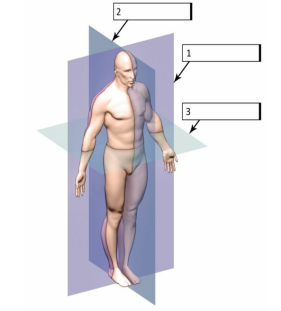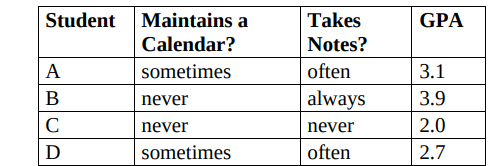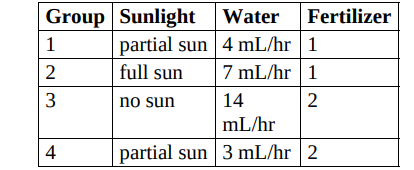Last Updated on January 17, 2025
ATI TEAS Science Practice Test 2025 (44 Questions Answers): This Assessment Technologies Institute (ATI) Test of Essential Academic Skills (TEAS) TEAS Science Practice Test for 2023 is free. There are a total of 44 questions with answer keys. You can download it in a PDF file for better ATI TEAS test prep.
In the real test, there are a total of 50 questions on the TEAS; however, six of them are unscored, pre-test questions used only by the test makers to gather information. That means 44 of the questions you answer will count toward your score.
ATI TEAS Science Practice Test 2025
Q1. A patient has a cellular problem that involves protein synthesis. Which organelle is NOT likely to be faulty?
- A) mitochondria
- B) endoplasmic reticulum
- C) ribosomes
- D) nucleus
Q2. What symptoms would you expect in a patient with low blood oxygen?
- A) joint pain
- B) weakness and low energy
- C) excessive bleeding
- D) nausea
Q3. The systemic loop carries oxygenated blood to the body from which chamber of the heart?
- A) left atrium
- B) right atrium
- C) left ventricle
- D) right ventricle
Q4. Where is food broken down in the digestive system so it can ultimately enter the bloodstream?
- A) in the stomach only
- B) in the stomach, small intestine, and large intestine
- C) in the mouth, stomach, and large intestine
- D) in the mouth, stomach, and small intestine
Q5. A patient has been diagnosed with a chemical imbalance in his brain. Which part of his neurons is likely to be affected by this imbalance?
- A) dendrites
- B) axons
- C) synapses
- D) lateral
Q6. Which statement about white blood cells is true?
- A) B cells are responsible for antibody production.
- B) White blood cells are made in the white/yellow cartilage before they enter the bloodstream.
- C) Platelets, a special class of white blood cell, function to clot blood and stop bleeding.
- D) The majority of white blood cells only activate during the age of puberty, which explains why children and the elderly are particularly susceptible to disease.
Q7. Which locations in the digestive system are sites of chemical digestion?
I. Mouth
II. Stomach
III. Small Intestine
- A) II only
- B) III only
- C) II and III only
- D) I, II, and III.
Q8. Which of the following are functions of the urinary system?
I. Synthesizing calcitriol and secreting erythropoietin
II. Regulating the concentrations of sodium, potassium, chloride, calcium, and other ions
III. Reabsorbing or secreting hydrogen ions and bicarbonate
IV. Detecting reductions in blood volume and pressure
- A) I, II, and III
- B) II and III
- C) II, III, and IV
- D) All of the above
Q9. Which of the following is an example of adaptive immunity?
- A) inflammation
- B) fever
- C) antibodies
- D) phagocytosis
Q10. Which of the following describes a situation in which research results are consistent with every subsequent experiment, but the test used in the experiment does not measure what it claims to measure?
- A) reliable, but not valid
- B) valid, but not reliable
- C) neither reliable nor valid
- D) both reliable and valid
Q11. Which of the following Mendellian laws describes how pairs of alleles within genes separate and recombine separately from other genes?
- A) law of segregation
- B) law of dominance
- C) law of independent assortment
- D) law of predictive traits
Q12. Which of the following describes how atomic radius varies across the periodic table?
- A) Atomic radius increases from top to bottom and left to right on the periodic table.
- B) Atomic radius increases from top to bottom and right to left on the periodic table.
- C) Atomic radius increases from top to bottom and toward the halogens on the periodic
table. - D) Atomic radius increases from top to bottom and toward the noble gases on the periodic
table.
Q13. Which of the following is NOT a tissue layer found in skeletal bone?
- A) periosteum
- B) bone marrow
- C) enamel
- D) cancellous bone
Q14. Which of the following sets of valves is primarily responsible for preventing blood flow from
major blood vessels to the heart?
- A) atrioventricular valves
- B) semilunar valves
- C) tricuspid valves
- D) bicuspid valves
Q15. Which of the following is the connective area where nerve impulses send neurotransmitters
across a synapse to a muscle cell to stimulate muscle contraction?
- A. sarcomere
- B. tendon
- C. myelin sheath
- D. neuromuscular junction
Q16. Bone is composed primarily of which of the following inorganic materials?
- A) calcium
- B) magnesium
- C) collagen
- D) potassium
Q17. Which of the following is the region of the brain that controls and regulates autonomic functions such as respiration, digestion, and heart rate?
- A) cerebellum
- B) medulla oblongata
- C) temporal lobe
- D) cerebral cortex
Q18. Which of the following is the primary physical barrier the body uses to prevent infection?
- A) mucus membranes
- B) stomach acid
- C) skin
- D) urine
Q19. If the pressure in the pulmonary artery is increased above normal, which chamber of the heart will be affected first?
- A) The right atrium
- B) The left atrium
- C) The right ventricle
- D) The left ventricle
Q20. What is the purpose of sodium bicarbonate when released into the lumen of the small intestine?
- A) It works to chemically digest fats in the chyme.
- B) It decreases the pH of the chyme so as to prevent harm to the intestine.
- C) It works to chemically digest proteins in the chyme.
- D) It increases the pH of the chyme so as to prevent harm to the intestine.
Q21. Which of the following describes a reflex arc?
- A) The storage and recall of memory
- B) The maintenance of visual and auditory acuity
- C) The autoregulation of heart rate and blood pressure
- D) A stimulus and response controlled by the spinal cord
Q22. Describe the synthesis of the lagging strand of DNA.
- A) DNA polymerases synthesize DNA continuously after initially attaching to a primase.
- B) DNA polymerases synthesize DNA discontinuously in pieces called Okazaki fragments after initially attaching to primases.
- C) DNA polymerases synthesize DNA discontinuously in pieces called Okazaki fragments after initially attaching to RNA primers.
- D) DNA polymerases synthesize DNA discontinuously in pieces called Okazaki fragments which are joined together in the end by a DNA
helicase.
Q23. Using anatomical terms, what is the relationship of the sternum relative to the deltoid?
- A) Medial
- B) Lateral
- C) Superficial
- D) Posterior
Q24. Ligaments connect what?
- A) Muscle to muscle
- B) Bone to bone
- C) Bone to muscle
- D) Muscle to tendon
Q25. A child complains of heavy breathing even when relaxing. They are an otherwise healthy child with no history of respiratory problems. What might be the issue?
- A) Asthma
- B) Blood clot
- C) Hyperventilation
- D) Exercising too hard
Q26. Find the lowest coefficients that will balance the following combustion equation.
__C2H10+__O2 __H2O+__CO2
- A) 1:5:5:2
- B) 4:10:20:8
- C) 2:9:10:4
- D) 2:5:10:4
Q27. What is the purpose of a catalyst?
- A) To increase a reaction rate by increasing the activation energy
- B) To increase a reaction’s rate by increasing the temperature
- C) To increase a reaction’s rate by decreasing the activation energy
- D) To increase a reaction’s rate by decreasing the temperature
Q28. Most catalysts found in biological systems are which of the following?
- A. Special lipids called cofactors.
- B) Special proteins called enzymes.
- C) Special lipids called enzymes.
- D) Special proteins called cofactors.
Q29. Which statement is true about the pH of a solution?
- A) A solution cannot have a pH less than 1.
- B) The more hydroxide ions in the solution, the higher the pH.
- C) If an acid has a pH of greater than 2, it is considered a weak base.
- D) A solution with a pH of 2 has ten times the amount of hydrogen ions than a solution with a power of 1.
Q30. Salts like sodium iodide (NaI) and potassium chloride (KCl) use what type of bond?
- A) Ionic bonds
- B) Disulfide bridges
- C) Covalent bonds
- D) London dispersion forces
Q31. Which of the following is unique to covalent bonds?
- A) Most covalent bonds are formed between the elements H, F, N, and O.
- B) Covalent bonds are dependent on forming dipoles.
- C) Bonding electrons are shared between two or more atoms.
- D) Molecules with covalent bonds tend to have a crystalline solid structure.
Q32. Which of the following describes a typical gas?
- A) Indefinite shape and indefinite volume
- B) Indefinite shape and definite volume
- C) Definite shape and definite volume
- D) Definite shape and indefinite volume
Q33. Which of the following areas of the body has the most sweat glands?
- A) Upper back
- B) Arms
- C) Feet
- D) Palms
Q34. A patient’s body is not properly filtering blood. Which of the following body parts is most likely malfunctioning?
- A) Medulla
- B) Heart
- C) Nephrons
- D) Renal cortex
Q35. A pediatrician notes that an infant’s cartilage is disappearing and being replaced by bone. What process has the doctor observed?
- A) Mineralization
- B) Ossification
- C) Osteoporosis
- D) Calcification
Q36. Identify the correct sequence of the 3 primary body planes as numbered 1, 2, and 3 in the above image.
- A) Plane 1 is coronal, plane 2 is sagittal, and plane 3 is transverse.
- B) Plane 1 is sagittal, plane 2 is coronal, and plane 3 is medial.
- C) Plane 1 is coronal, plane 2 is sagittal, and plane 3 is medial.
- D) Plane 1 is sagittal, plane 2 is coronal, and plane 3 is transverse.
Q37. Which of the following is NOT a major function of the respiratory system in humans?
- A) It provides a large surface area for gas exchange of oxygen and carbon dioxide.
- B) It helps regulate the blood’s pH.
- C) It helps cushion the heart against jarring motions.
- D) It is responsible for vocalization.
Q38. Which of the following is NOT a function of the forebrain?
- A) To regulate blood pressure and heart rate
- B) To perceive and interpret emotional responses like fear and anger
- C) To perceive and interpret visual input from the eyes
- D) To integrate voluntary movement
Q39. A researcher is exploring factors that contribute to the GPA of college students. While the sample is small, the researcher is trying to determine what the data shows. What can be reasoned from the table below?
- A) No college students consistently maintain a calendar of events.
- B) There is an inverse correlation between maintaining a calendar and GPA, and there is a positive correlation between taking notes and GPA.
- C) There is a positive correlation between maintaining a calendar and GPA, and there is no correlation between taking notes and GPA.
- D) There is no correlation between maintaining a calendar and GPA, and there is a positive correlation between taking notes and GPA.
Q40. Four different groups of the same species of peas are grown and exposed to differing levels of sunlight, water, and fertilizer as documented in the table below. The data in the water and fertilizer columns indicates how many times the peas are watered or fertilized per week, respectively. Group 2 is the only group that withered. What is a reasonable explanation for this occurrence?
- A) Insects gnawed away the stem of the plant.
- B) The roots rotted due to poor drainage.
- C) The soil type had nutrition deficiencies.
- D) This species of peas does not thrive in full sunlight.
Q41. Anya was paid by Company X to analyze dwindling honeybee populations of the Southwest. After measuring hive populations over several months, she noticed no patterns in the geographic distributions of the deaths after comparisons with local maps of interest. This supported her hypothesis, so she took samples of the honey and the bees from the hives and performed dozens of dissections to confirm her suspicions. Which of the following is the most likely hypothesis upon which this research was performed?
- A) Honeybees are being killed off and their hives destroyed by other extremely aggressive species of bees from the South.
- B) Honeybees are contracting parasites in large droves.
- C) Honeybees are so sensitive to certain pesticides that they die on contact.
- D) Honeybees die in larger numbers around cell phone towers.
The next three questions are based on the following passage .
A scientist designs an experiment to test the hypothesis that exposure to more sunlight will increase the growth rate of elodea, a type of aquatic plant. The scientist has accumulated data from previous experiments that identify the average growth rate of elodea exposed to natural sunlight in the wild. In the experiment set up, there are three tanks housing ten elodea each. Tank A is positioned in front of a window to receive natural sunlight similar to what elodea are exposed to; tank B is positioned in front of the same window but has an additional sunlight-replicating lamp affixed to it; and tank C is positioned in a dark corner with no exposure to natural sunlight.
Q42. When setting up the above experiment, the scientist has the option of using a separate water filter for each of the three tanks or using a single filtration system that attaches all three and affects them simultaneously. Which of the following filter set ups makes a more valid experiment and why?
- A) separate filters for each of the three tanks, because this ensures a higher quality of water for each tank
- B) one filtration system for all three tanks, because this makes filtration a controlled variable
- C) one filtration system for all three tanks, because this reduces the workload for the researcher
- D) separate filters for each of the three tanks, because this adds another variable to be tested and analyzed for inclusion in the experiment’s results
Q43. The above experimental design description is an example of which of the following types of experiments?
- A) field experiment
- B) natural experiment
- C) controlled experiment
- D) observational study
Q44. Which of the following is the control group in the above experiment?
- A) tank A
- B) tank B
- C) tank C
- D) There is no control group in this experiment.
See also:



